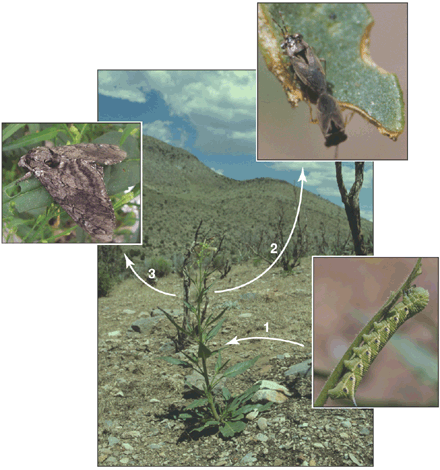 Plant perfumes, hungry herbivores, and biting bugs. In a natural ecosystem in the Great Basin desert, wild tobacco plants are attacked by caterpillars of the moth Manduca quinquemaculata. This attack induces the tobacco plants to emit volatile organic compounds that attract natural enemies of the caterpillars such as big-eyed bugs (Geocoris pallens upper right). The airborne volatiles also stop adult M. quinquemaculata moths (left) from laying their eggs on tobacco plant leaves.
Plant perfumes, hungry herbivores, and biting bugs. In a natural ecosystem in the Great Basin desert, wild tobacco plants are attacked by caterpillars of the moth Manduca quinquemaculata. This attack induces the tobacco plants to emit volatile organic compounds that attract natural enemies of the caterpillars such as big-eyed bugs (Geocoris pallens upper right). The airborne volatiles also stop adult M. quinquemaculata moths (left) from laying their eggs on tobacco plant leaves.See also: Kessler, A., and I. T. Baldwin. 2001. Defensive Function of Herbivore-Induced Plant Volatile Emissions in Nature. Science 291(5511):2141. March 16.